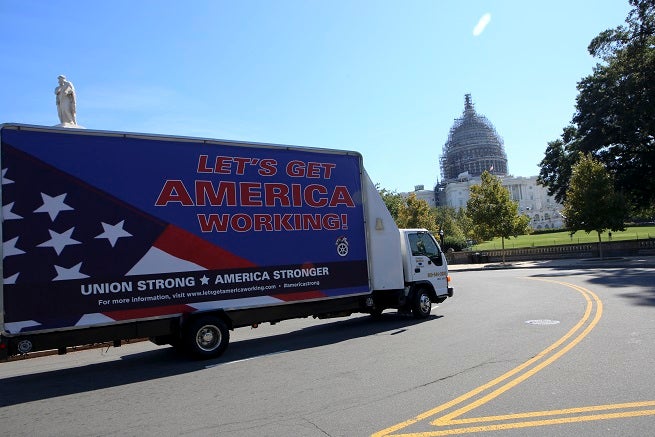Uncategorized
Manufacturing Workers Deserve Better Pay

Manufacturing jobs used to be considered the backbone of the middle class. But since the onslaught of terrible trade deals like NAFTA and the reduction in union density, that has become less the case. A new report says many of those working on the line now need help from the government as well.
The University of California, Berkeley’s Center for Labor Research and Education found that a third of U.S. workers toiling in non-supervisory manufacturing production rely on some form of public assistance. While elected officials have been quick to provide tax breaks and subsidies to lure manufacturing jobs, the low wages these companies pay cost taxpayers about $10.2 billion a year.
The lack of compensation is even worse for those manufacturing workers hired through temp agencies. In those cases, half are on public assistance. The report states nine percent of all frontline manufacturing workers are temporary workers.
“Manufacturing has long been thought of as providing high-paying, middle-class work, but the reality is the production jobs are increasingly coming to resemble fast-food or Walmart jobs, especially for those workers employed through temporary staffing agencies,” said Ken Jacobs, chair of the Labor Center and co-author of the report. “While employment in manufacturing has started to grow again following the Great Recession, the new jobs created are less likely to be union and more likely to pay low wages.”
The report further states that the high rates of frontline manufacturing workers on the public dole is not due to fewer hours, but instead low wages. Those hired directly by manufacturers earned a median average of $15.03 an hour, while temp manufacturing production workers make $10.88 an hour on average.
So what can be done to solve the situation? These workers need to join a union, just like Ohio auto parts production worker Philadonna Wade did. She detailed in Newsweek her struggle and that of her colleagues to join the United Auto Workers. Now, she said, they can provide for themselves.
“We’ll now have the chance to bargain for a contract that will raise our pay and improve our benefits so we can support our families,” she wrote. “We are on a path to better wages and a real shot at the middle class that manufacturing jobs once provided.”
Unions helped build the middle class. And with the help of workers, they will do so again.